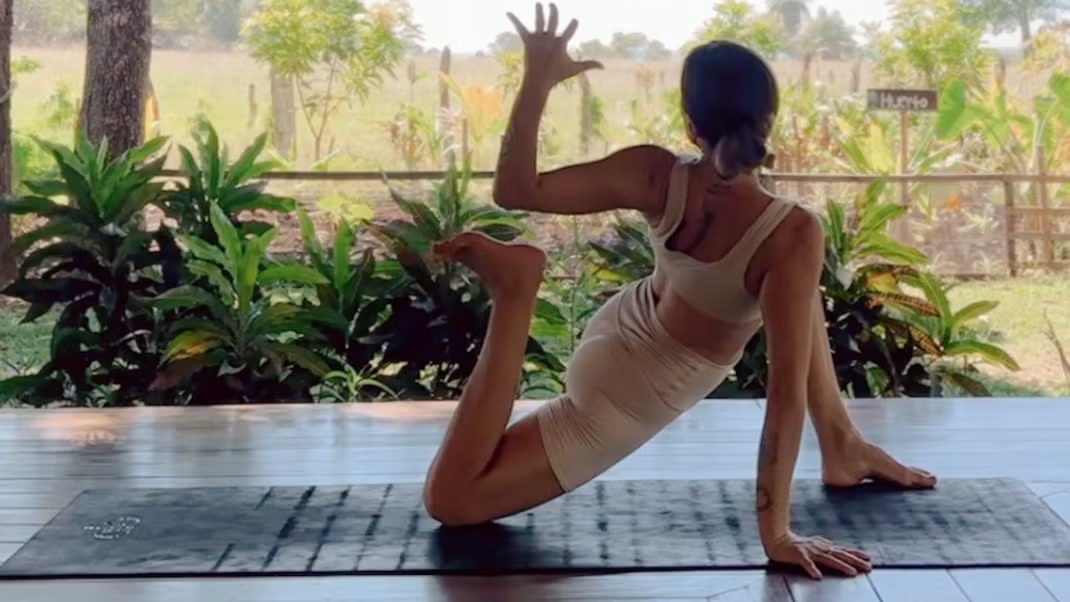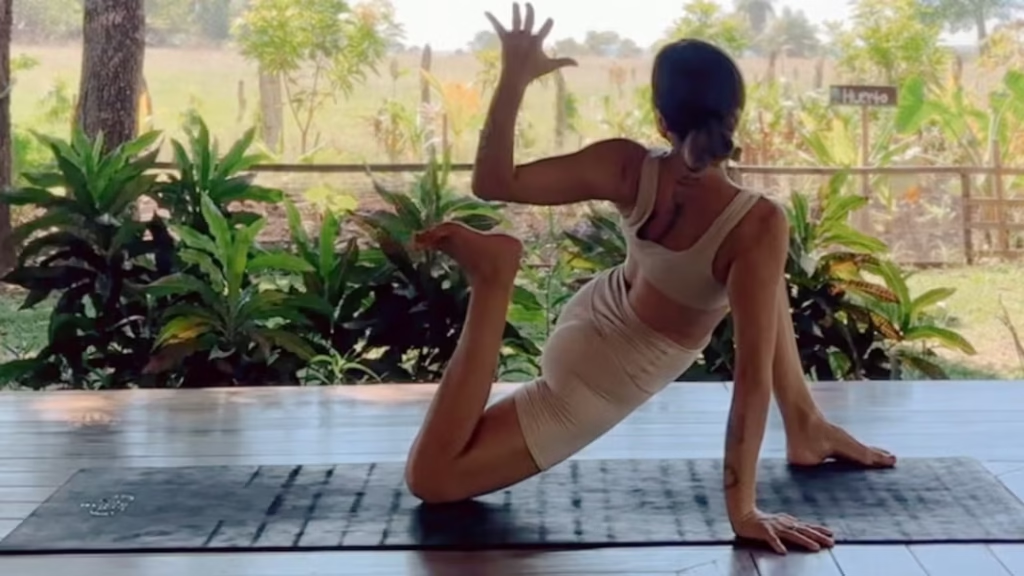
Mandala flows are designed to move your body in different directions across your mat, creating a practice that is literally well-rounded. These flows encourage creativity and spontaneity, offering a refreshing change when you’re feeling a bit “blah” or stuck in a repetitive routine. As a teacher, mandala flows can tap into your creative energy, and as a student, they keep you engaged and energized since you never quite know what’s coming next. Unlike traditional sequences, mandala flows allow for more freedom and unpredictability.
While mandala flows can be a fun and enlivening practice, they’re not for everyone. Some people may feel frustrated or confused as they navigate the flow around the mat, while others might prefer more structured sequences. That’s completely okay! The beauty of yoga is that there’s a vast range of styles and practices to explore, meaning you can always find something that resonates with you.
A Mandala Flow to Energize Your Home Practice
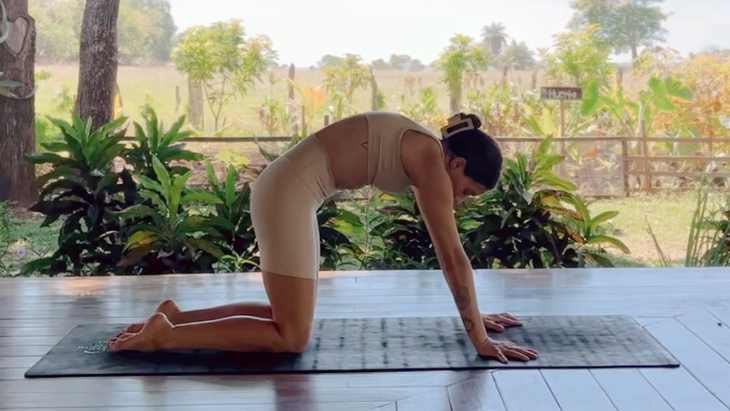
If you’re new to this style, come to the mat with an open mind and heart. Approach the practice with curiosity and kindness toward yourself. Moving mindfully through each transition will make your yoga experience even more enjoyable, and you might just find your new favorite flow!
Mandala Flow SequenceMandala Flow Sequence: A Full Body Energizing Practice
This Mandala Flow will take you through a dynamic sequence that moves you in various directions on the mat, offering a balanced and creative practice. Follow this sequence as you flow through different poses that engage your entire body, opening up your hips, chest, and shoulders, while enhancing strength and flexibility.
1. Cat Pose
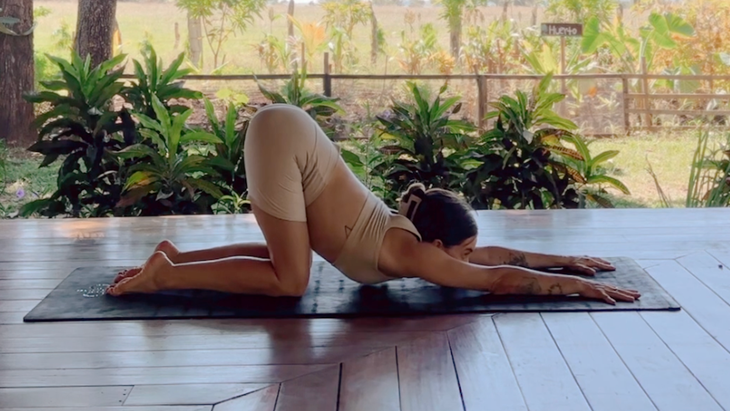
Start on all fours in Tabletop position, with your wrists directly beneath your shoulders and knees beneath your hips. Inhale deeply, and as you exhale, round your back, tucking your chin toward your chest. This is Cat Pose (Marjaryasana). Focus on stretching and activating your spine, feeling the space between each vertebra.
2. Puppy Pose
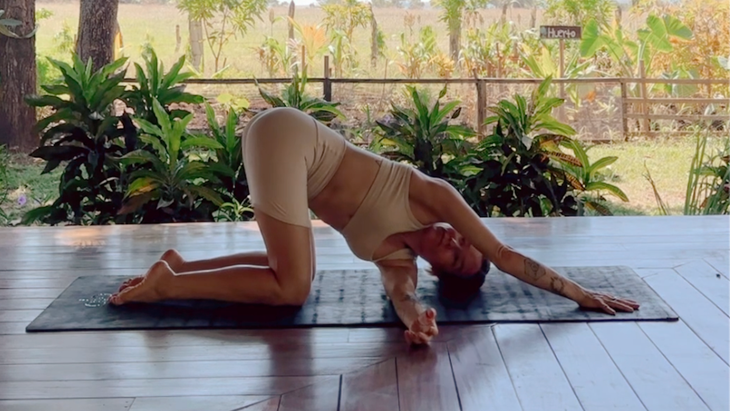
On your next exhale, walk your hands forward and melt your heart closer to the mat, keeping your hips high. This is Puppy Pose (Uttana Shishosana), which deeply stretches the upper back and shoulders while also lengthening the spine.
3. Thread the Needle

Inhale and lift halfway, then exhale and slide your left arm underneath your body, threading it toward the right. Rest your left shoulder and the side of your head on the mat. This pose helps release tension in the shoulders and upper back, giving you a gentle twist.
4. Kneeling Side Plank
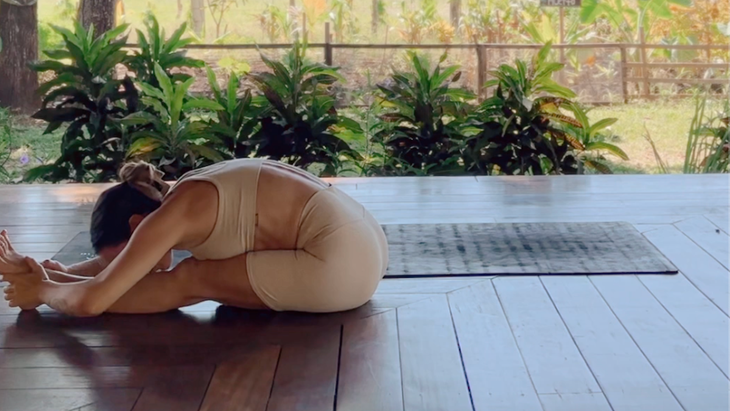
Inhale as you unwind your left arm and reach it toward the sky, stacking your right shoulder over your right wrist. Keep your right knee on the ground, and kickstand your right shin behind you. Extend your left leg toward the back of the mat, entering a modified Side Plank. This variation strengthens the shoulders and engages the core.
5. Head-to-Knee Pose
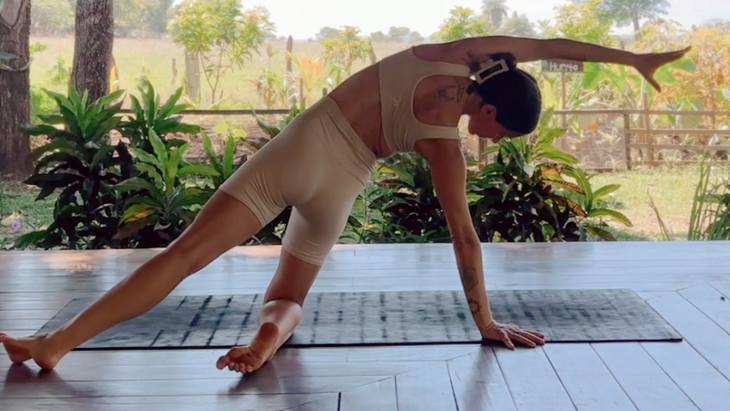
Exhale and lift both arms toward the sky. Turn your chest toward the back of your mat, sit on the mat, and fold over your left leg in Head-to-Knee Forward Bend (Janu Sirsasana). Let your right knee stay bent, opening out to the right side. This pose stretches the hamstrings while opening the hips.
6. Kneeling Wild Thing

Inhale and lift your hips, squeezing your glutes, while extending your left leg straight. Stack your right shoulder over your right wrist and reach your left arm overhead, moving into a modified Wild Thing. Exhale and stay here for another breath, hugging your shoulder blades behind you and pressing your chest forward.
7. Extended Kneeling Side Plank
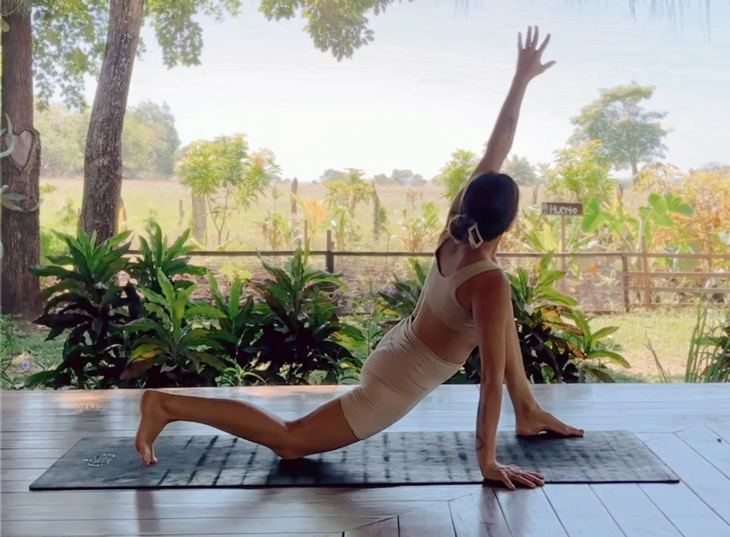
Inhale into an extended kneeling Side Plank by lifting your left leg toward the sky. If possible, hook your left big toe with your left peace fingers. This variation challenges your balance while opening up the chest.
8. Lizard Pose
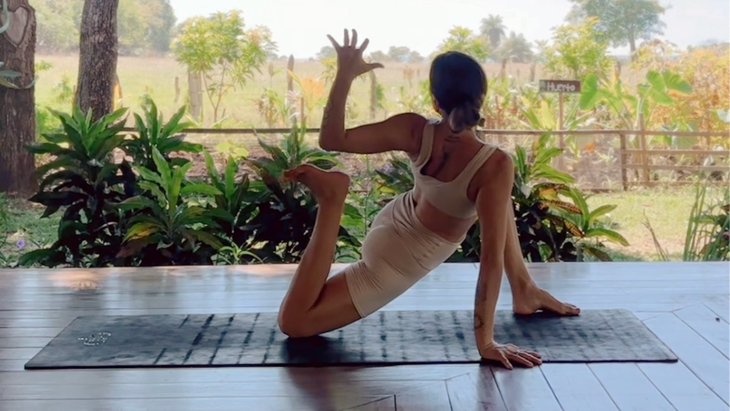
Exhale and step your left foot forward, placing it along the outer edge of the mat. Keep your back toes tucked, then inhale as you lift your left arm high. Feel the deep stretch in your hips as you settle into Lizard Pose (Utthan Pristhasana).
9. Cactus Twist
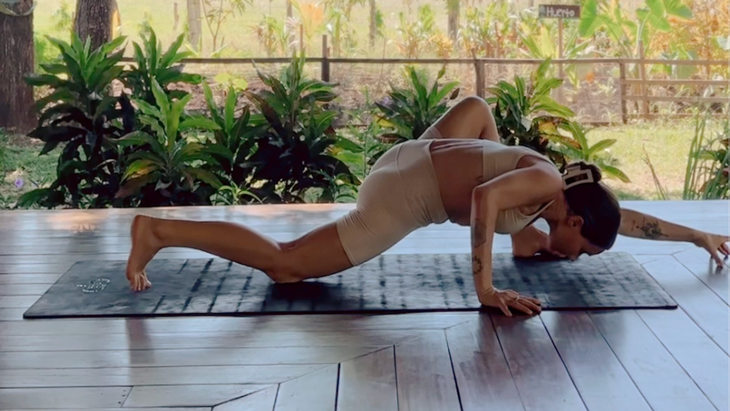
Exhale and draw your right heel toward your hip as you cactus your left arm behind you, twisting to look over your left shoulder. This Cactus Twist opens the chest and shoulders while creating a gentle twist in the spine.
10. Lizard Fold
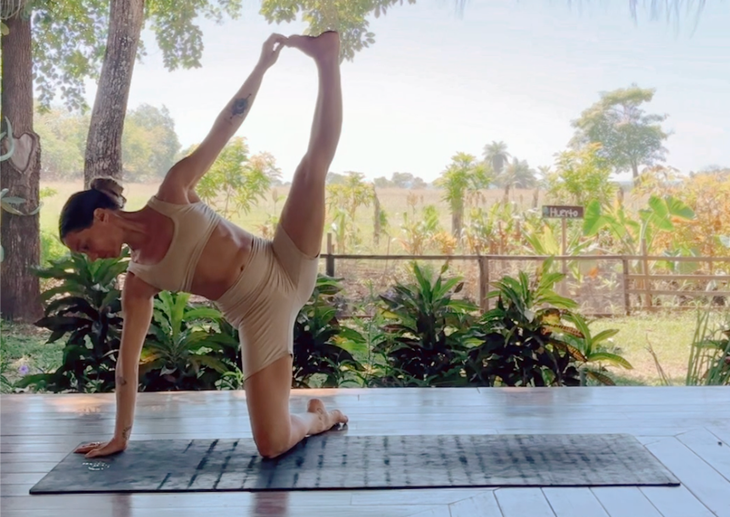
Inhale back to center, lowering your back foot. Exhale into a Lizard Fold, walking your left hand forward and bowing your torso to the inside of your left thigh. This fold releases the hip flexors and deepens the stretch in the groin.
11. Extended Modified Side Plank
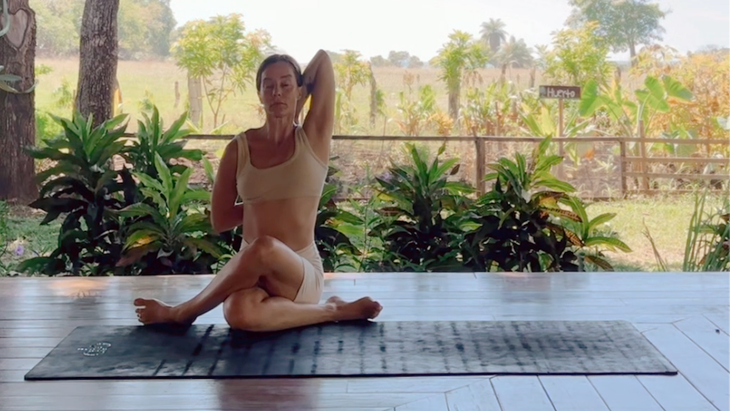
Inhale as you rise, spiraling your left arm open and lowering your right hand to the back of the mat. Stack your right shoulder over your right wrist and lift your left leg high, hooking your big toe with your peace fingers, if accessible.
12. Cow Face Pose
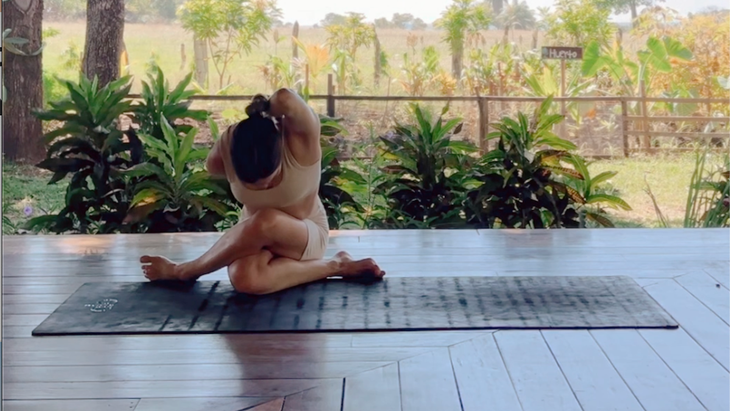
Exhale and move into Cow Face Pose (Gomukhasana) by crossing and stacking your left knee over your right. Bend your left elbow and take it skyward, reaching around with your right hand to hook your fingers behind your back.
13. Cow Face Fold
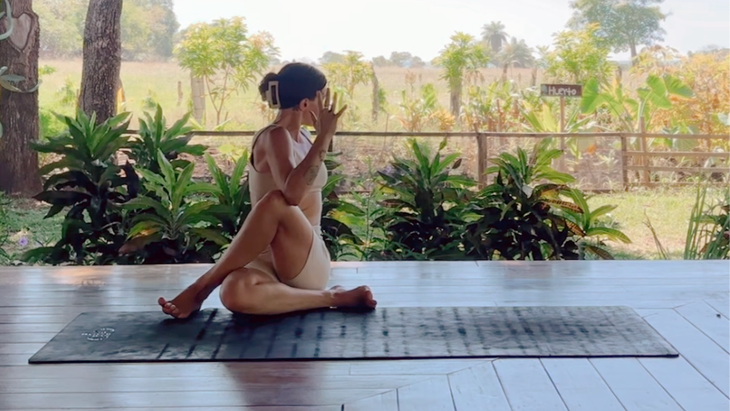
Inhale and sit tall, resting your head against the crook of your left arm. Lean slightly back to deepen the stretch in your chest and shoulders. Exhale and either stay here or fold forward with a flat back, keeping the bind.
14. Half Lord of the Fishes Pose
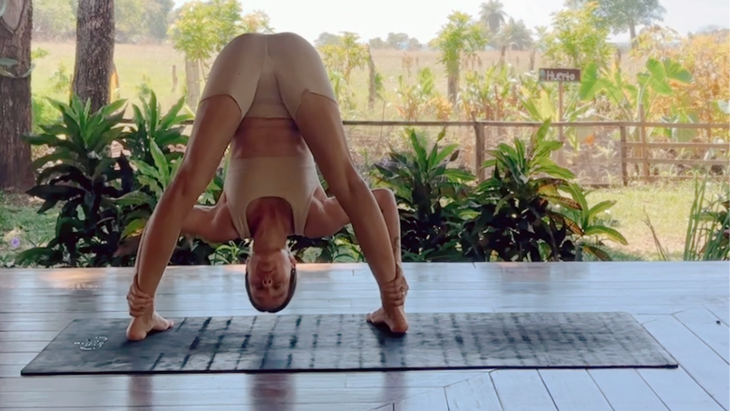
Inhale and rise into Half Lord of the Fishes Pose (Ardha Matsyendrasana), a seated twist. Plant your left foot alongside your outer right thigh, then take your left arm behind you and place your hand flat on the ground or tenting your fingers. Hook your right elbow to the outer left thigh.
15. Wide-Legged Standing Forward Bend
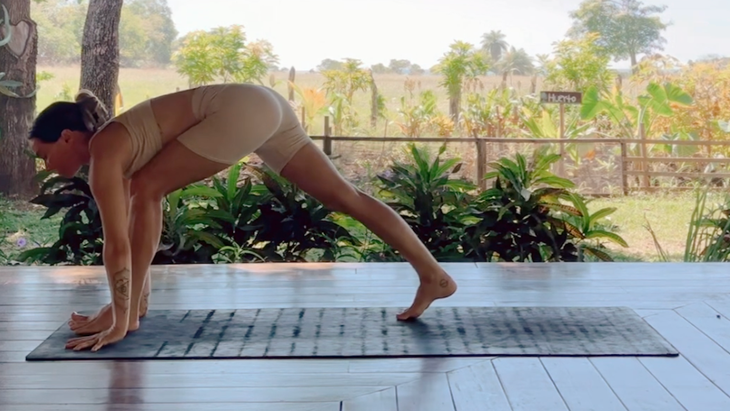
Exhale and unwind to the right, transitioning into a Wide-Legged Standing Forward Bend (Prasarita Padottanasana), facing the left long side of the mat. Turn your toes slightly inward and bend your knees as needed.
16. Low Lunge
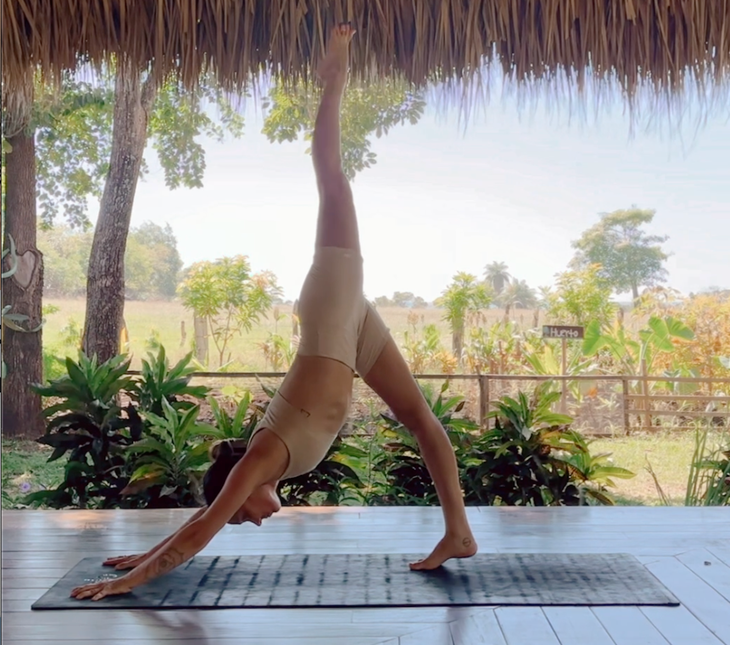
Inhale and shift into a Low Lunge (Anjaneyasana), facing the back of the mat. Frame your left foot with flattened palms, bending your left knee and lowering your hips while lifting your chin.
17. Three-Legged Dog
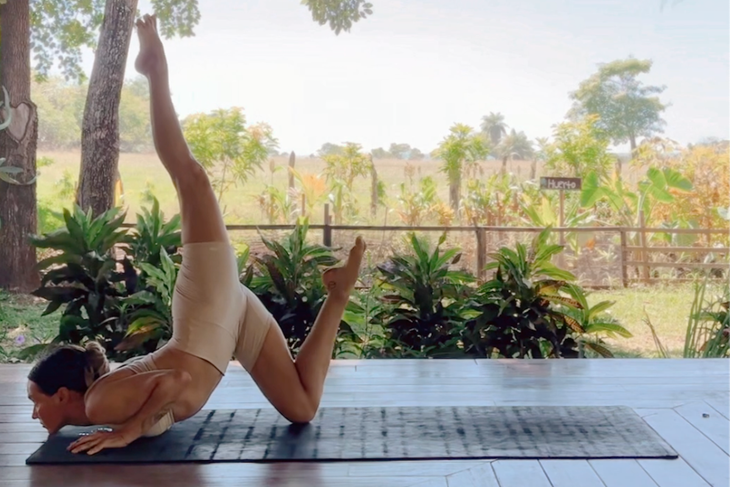
Exhale and extend your right leg toward the sky in Three-Legged Dog (Tri Pada Adho Mukha Svanasana), keeping your hips level. Pause here for a deep inhalation.
18. Sun Bird
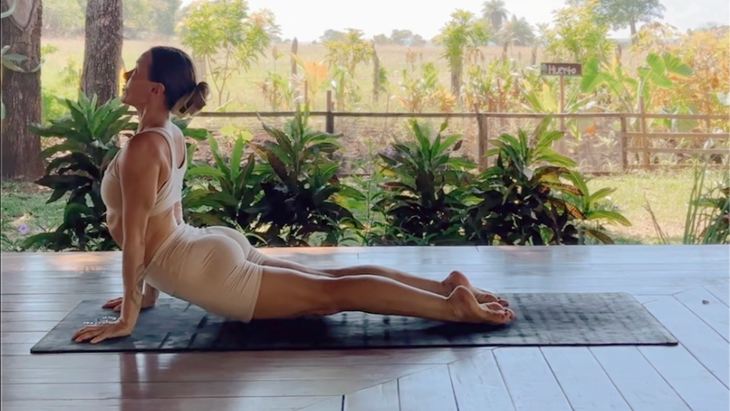
Exhale into Sun Bird, shifting toward Plank Pose before gently lowering your left knee, chest, and chin to the mat, while keeping your right leg extended high.
19. Upward-Facing Dog

Inhale as you move into Upward-Facing Dog (Urdhva Mukha Svanasana), lifting your chest forward and up, opening the chest and strengthening the back.
Conclusion: Embrace the Flow
Mandala flows are an energizing and creative way to deepen your practice while moving in various directions across your mat. They’re an excellent way to break free from the monotony of traditional sequences and get your body into a rhythmic, balanced state. By embracing the spontaneity and fluidity of these movements, you’ll find your practice becomes more engaging, dynamic, and fun.
Give this flow a try, and see how it shifts your energy, both physically and mentally. Whether you’re new to mandala flows or an experienced yogi, you’ll find that embracing the movement around the mat adds new layers of awareness and vitality to your practice.
